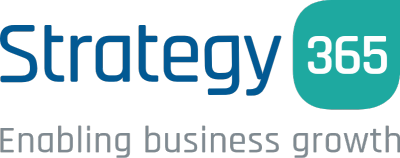Since Copilot was announced in March, its growth has been widespread. We detail the considerations for your business in implementing it for Microsoft 365.
There are a range of considerations when implementing Copilot:
Technical Requirements
To use Copilot, your organisation needs to meet some technical requirements and have some features enabled:
- Copilot users must have either a Microsoft 365 E3 or E5 license and an Azure Active Directory account, which gives them access to the Microsoft 365 apps and services that work with Copilot including Word, Excel, PowerPoint, OneDrive, Outlook, Loop, and more.
- Your users will need to be on the Current Channel or on the Monthly Enterprise Channel for Microsoft 365 apps to have access to Copilot. Find out more here.
There are also some recommendations:
- Copilot services connect to endpoints contained within the Microsoft 365 endpoint taxonomy. As with all Microsoft 365 services, its recommended that organisations follow Microsoft 365 network connectivity principles to help provide the best experience with Copilot, reduce latency and improve network quality of service (QoS)
- Some Copilot experiences require a WebSocket connection from the device running the Microsoft 365 app to a Microsoft service, so WebSockets must be unblocked from user endpoints.
- To make use of cross-app intelligence experiences in Teams, plugins will need to be enabled in the Teams admin center.
Permissions
Microsoft 365 Copilot uses existing permissions and policies to deliver the most relevant information. This means it is important to have good content management practices in place. For many organisations, content oversharing, where content is shared beyond the needed audience either intentionally or accidentally, can be a problem. Find out how your organisation can detect and prevent oversharing by reading the this guide, watching this video, and reading this article.
Security, privacy, and data residency
Copilot experiences use the organisational content in your Microsoft 365 tenant, including calendars, emails, chats, documents, meetings, contacts, and more – all from within the Microsoft 365 compliance boundary. Copilot experiences do not use OpenAI’s publicly available services; all processing is achieved using Azure OpenAI services.
Copilot data calls are routed to the nearest datacentres in your region, but can occasionally call into other regions where capacity is available during periods of high utilisation. No customer data is ever written outside of your users’ home regions. Starting in July, the Early Access Program for Microsoft 365 Copilot will align with Microsoft’s commitments under the EU Data Boundary.
The effectiveness of Copilot will depend on the data sources indexed by Microsoft 365. Tenants with the most abundant data in Microsoft 365 (Exchange, OneDrive, SharePoint, Teams) will get the best results from Copilot. With access to comprehensive organizational data, Copilot can suggest more relevant and personalised content based on the user’s work context and preferences.
Microsoft does not claim ownership of the content created by Copilot capabilities.
Copilot licence management
As with other apps and services, administrators will be able to manage Microsoft 365 Copilot licenses (pricing for which is not currently available) in the Microsoft 365 admin center. As well as assigning licences to individuals, licences can be assigned by group membership in Azure Active Directory or via PowerShell. Additional administration option will be released in due course.
Driving Copilot adoption
Tools in the Microsoft 365 admin center, including an onboarding guide, can help your users get started and adopt Copilot once it is available for your organisation.
Today, you can already help your users start learning about Copilot and AI fundamentals at the Microsoft AI help & learning site, where they can find information on Copilot and how it can transform their work experience. It is also recommended that you enable in-product prompts to send in-app message to inform users where they can find and use Copilot features.
Staying up to date
It is important to stay to date about the latest Copilot features, changes, and announcements using the Message center in the Microsoft 365 admin center under Health > Message center. It is also possible to assign non-administrators the Message center reader role so that your early adopters of Copilot can keep abreast of changes. Microsoft will be adding the Copilot service as a Preference option in due course, so users focused on Copilot can limit their communications accordingly.
Summary
Copilot seems destined to change the way users work with Microsoft products, but it is not a case of enabling the feature on and letting users loose. It is important to consider your Microsoft tenant’s ecosystem to ensure that Copilot is working with the right data and for the right users. If you are an existing Strategy 365 client and wish to discuss the considerations above, get in touch with one of our experts today.



